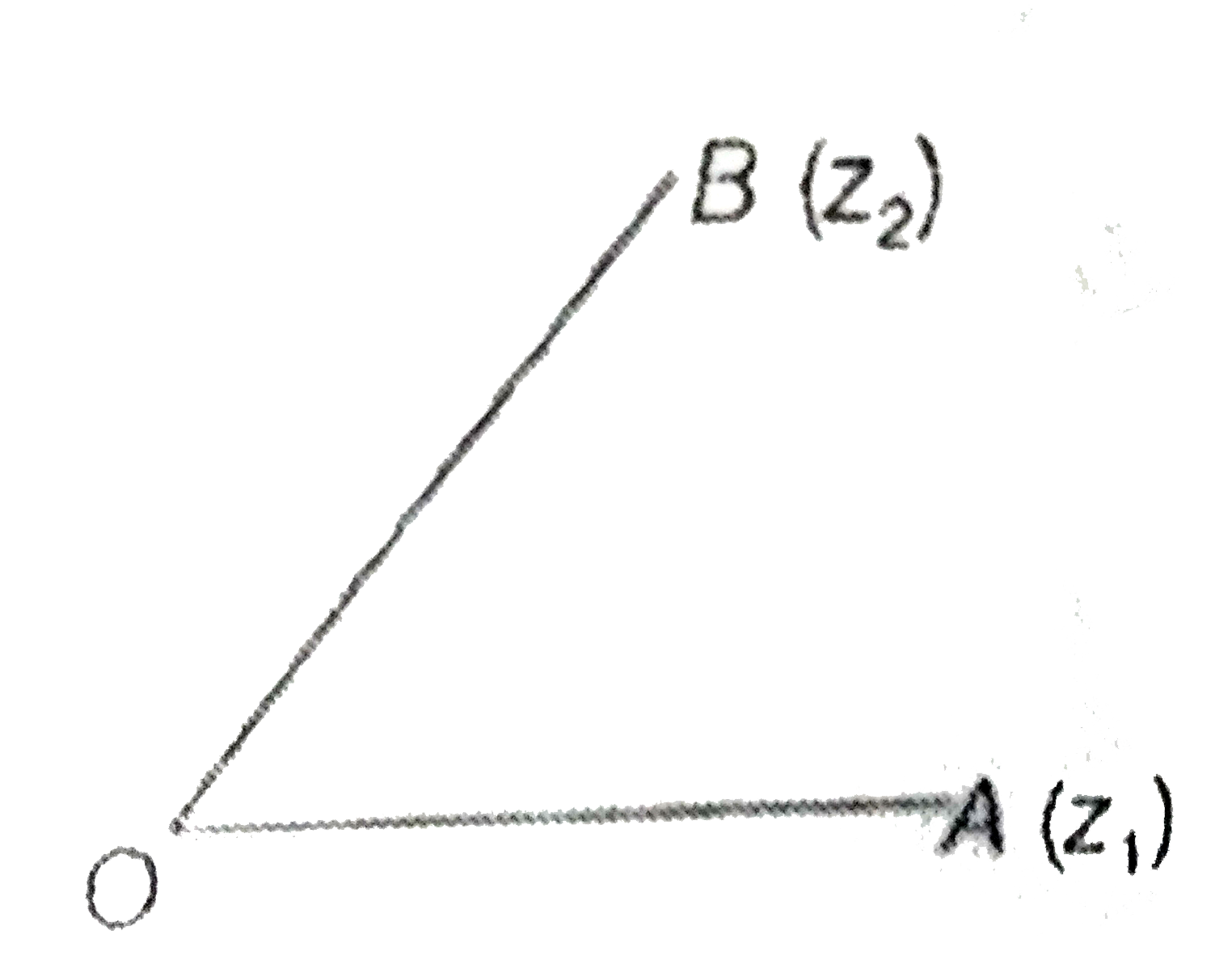Let z1andz2 be the root of the equation z2+pz+q=0 where the coefficient p and q may be complex numbers. Let A and B represent z1andz2 in the complex plane. If ∠AOB=α≠0and0andOA=OB,whereO is the origin prove that p2=4qcos2(α2)
Since z1+z2=−andz1z2=q
Now z1z2=|z1||z2|(cosα+Isinα)
⇒z1z2=cosα+Isinα1
[∵|z1|=|z2|]
Applying componendo and dividendo, we get
z1+z2z1−z2=cosα+isinα+1cosα+isinα−1
=2cos2(α/2)+2isin(α/2)cos(α/2)−2sin2(α/2)+2isin(α/2)cos(α/2)
=2cos(α/2)[cos(α/2)+isin(α/2)]2isin(α/2)[cos(α/2)+sin(α/2)]
=cot(α/2)i=−icotα/2⇒−pz1−z2=−icot(α/2)
On squaring both sides , we get p2(z1−z2)2=−icot(α/2)
⇒ p2(z1+z2)2−4z1z2=−cot2(α/2)
⇒p2p2−4q=−cot2(α/2)
⇒p2=−p2cot2(α/2)+4qcot2(α/2)
⇒p2(1+cot2α/2)=4qcot2(α/2)
p2cosec2(α/2)=4qcot2(α/2)
⇒p2=4qcos2α/2

Topper's Solved these Questions
- BOOK - IIT JEE PREVIOUS YEARCHAPTER - COMPLEX NUMBERSEXERCISE - TOPIC 4 ROTATION OF A COMPLEX NUMBER (INTERGER ANSWER TYPE QUESTION )1videos
COMPLEX NUMBERS
- BOOK - IIT JEE PREVIOUS YEARCHAPTER - COMPLEX NUMBERSEXERCISE - TOPIC 5 DE-MOIVRES THEOREM,CUBE ROOTS AND nth ROOTS OF UNITY ( OBJECTIVE QUESTIONS I)(ONLY ONE CORRECT OPTION)12videos
COMPLEX NUMBERS
- BOOK - IIT JEE PREVIOUS YEARCHAPTER - COMPLEX NUMBERSEXERCISE - TOPIC 4 ROTATION OF A COMPLEX NUMBER (FILL IN THE BLANKS )3videos
COMPLEX NUMBERS
- BOOK - IIT JEE PREVIOUS YEARCHAPTER - CIRCLEEXERCISE - Topic 5 Integer Answer type Question1videos
CIRCLE
- BOOK - IIT JEE PREVIOUS YEARCHAPTER - DEFINITE INTEGRATIONEXERCISE - LIMITS AS THE SUM6videos
DEFINITE INTEGRATION
Similar Questions
Let z1andz2 b be toots of the equation z2+pz+q=0, where he coefficients pandq may be complex numbers. Let AandB represent z1andz2 in the complex plane, respectively. If ∠AOB=θ≠0andOA=OB,whereO is the origin, prove that p2=4qcos2(θ/2).
View SolutionLet z1andz2 be the roots of the equation 3z2+3z+b=0. If the origin, together with the points represented by z1andz2 form an equilateral triangle then find the value of b.
View Solution
Knowledge Check
- Question 1 - Select One
Let z1andz2 be the root of the equation z2+pz+q=0 where the coefficient p and q may be complex numbers. Let A and B represent z1andz2 in the complex plane. If ∠AOB=α≠0and0andOA=OB,whereO is the origin prove that p2=4qcos2(α2)
A4qcosα2B4qcos2α2C4qsinα2D4qsin2α2 - Question 2 - Select One or More
z1andz2 are the roots of the equaiton z2−az+b=0 where |z1|=|z2|=1 and a,b are nonzero complex numbers, then
A|a|≤1B|a|≤2C2arg(a)=arg(b)Dagra=2arg(b) - Question 3 - Select One
Let z1 and z2 be the roots of the equation z2+pz+q=0. Suppose z1 and z2 are represented by points A and B in the Argand plane such that ∠AOB=α, where O is the origin.
Statement-1: If OA=OB, then p2=4qcos2α2
Statement-2: If affix of a point P in the Argand plane is z, then zeia is represented by a point Q such that ∠POQ=α and OP=OQ.AStatement-1 is True, Statement-2 is True: Statement-2 is a correct exp,anation for statement-1.BStatement-1 is true, statement -2 is true, Statement-2 is not a correct explanation for statement-1.CStatement-1 is True, statement-2 is false,Dstatement-1 is False, Statement-2 is true.
Number of solutions of the equation z3+3(¯z)2|z|=0 where z is a complex number is
View SolutionSolve the equation z2+|z|=0 , where z is a complex number.
View SolutionLet z1 and z2 be the roots of z2+pz+q=0. Then the points represented by z1,z2 the origin form an equilateral triangle if p2=3q.
View SolutionIf z1 and z2 are two roots of the equation z2+az+b=0,z being complex number further assume that the origin z1andz2 form an equilateral triangle then
View SolutionLet a, b, c be distinct complex numbers with |a|=|b|=|c|=1 and z1, z2 be the roots of the equation az2+bz+c=0 with |z1|=1. Let P and Q represent the complex numbers z1 and z2 in the Argand plane with ∠POQ=θ, o∘<180∘ (where O being the origin).Then
View Solution

